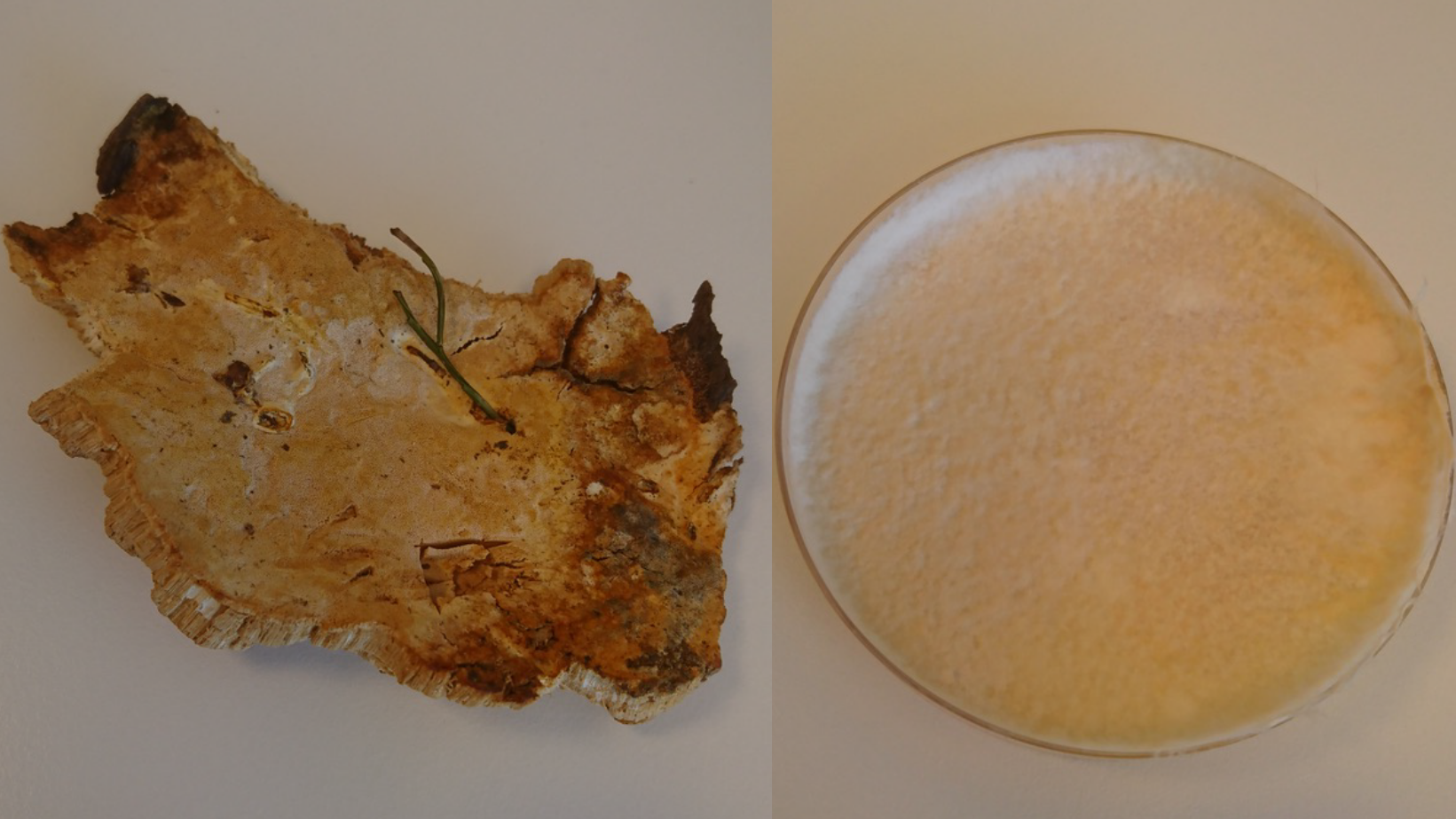
In the "1KFG: Deep Sequencing of Ecologically-relevant Dikarya"
project (CSP1974), we aim to sequence additional sampling of
genomic diversity within keystone lineages of plant-interacting
fungi and saprophytic fungi that are of special ecological
importance for understanding terrestrial ecosystems. In addition,
comparative genome analysis with saprotrophic, mycorrhizal and
pathogenic fungi will provide new insights into the specific and
conserved adaptations associated with each fungal lifestyle.
Perenniporia subacida (Peck)
Donk
The genus Perenniporia (order Polyporales) is most likely
polyphyletic, with ca. 90 species across eight clades, fruiting on
dead and living hardwood and conifers, causing white rots. The
species (Group) Perenniporia subacida produces perennial
effused tough sporocarps with a whitish to ivory margin, soft and
up to 2-mm wide. Widely distributed in forest regions of Asia and
North America, in Europe it is mainly a boreal eastern species
where it usually grows on spruce (Picea abies), but has
also been found on Larix and Pinus, with
occasional records on hardwood (Populus and
Prunus).
The strain PersubVin-SM18 was isolated from a sporocarp of
Perenniporia subacida fruiting on dead spruce, sampled in
Vinterbro (Viken), Norway.
Why sequence the
genome?
Perenniporia subacida was traditionally accepted in
Perenniporia, but the species did not appear to belong to
Perenniporia based on the unbranched skeletal hyphae and
ellipsoid and non-truncate basidiospores. Some studies have found
that P. subacida is monophyletic and distinct from
Perenniporia sensu stricto. The genome will be included in
a large comparative genomics study of Polyporales.
Researchers who wish to publish analyses using data from
unpublished CSP genomes are respectfully required to contact the PI
and JGI to avoid potential conflicts on data use and coordinate
other publications with the CSP master paper(s).
References
- Dai YC. 2010. Species diversity of wood-decaying fungi in northeast China. Mycosystema 29:801–818.
- Decock C. & Stalpers J. 2006. Studies in Perenniporia: Polyporus unitus, Boletus medulla-panis, the nomenclature of Perenniporia, Poria and Physisporus and a note on European Perenniporia with a resupinate basidiome. Taxon 53:759–778.
- Gilbertson RL. & Ryvarden L. 1987. North American polypores. Vol. 2. Megasporoporia- Wrightoporia. Fungiflora.
- Miettinen O. & Rajchenberg M. 2012. Obba and Sebipora, new polypore genera related to Cinereomyces and Gelatoporia (Polyporales, Basidiomycota). Mycol Prog 11:131–147.
- Robledo, G.L., Amalfi, M., Castillo, G., Rajchenberg, M. and Decock, C., 2009. Perenniporiella chaquenia sp. nov. and further notes on Perenniporiella and its relationships with Perenniporia (Poriales, Basidiomycota). Mycologia, 101(5), pp.657-673.
- Ryvarden L. & Melo I. 2010. Poroid fungi of Europe.
- Zhao, C.L., Cui, B.K. and Dai, Y.C., 2013. New species and phylogeny of Perenniporia based on morphological and molecular characters. Fungal Diversity, 58(1), pp.47-60.
